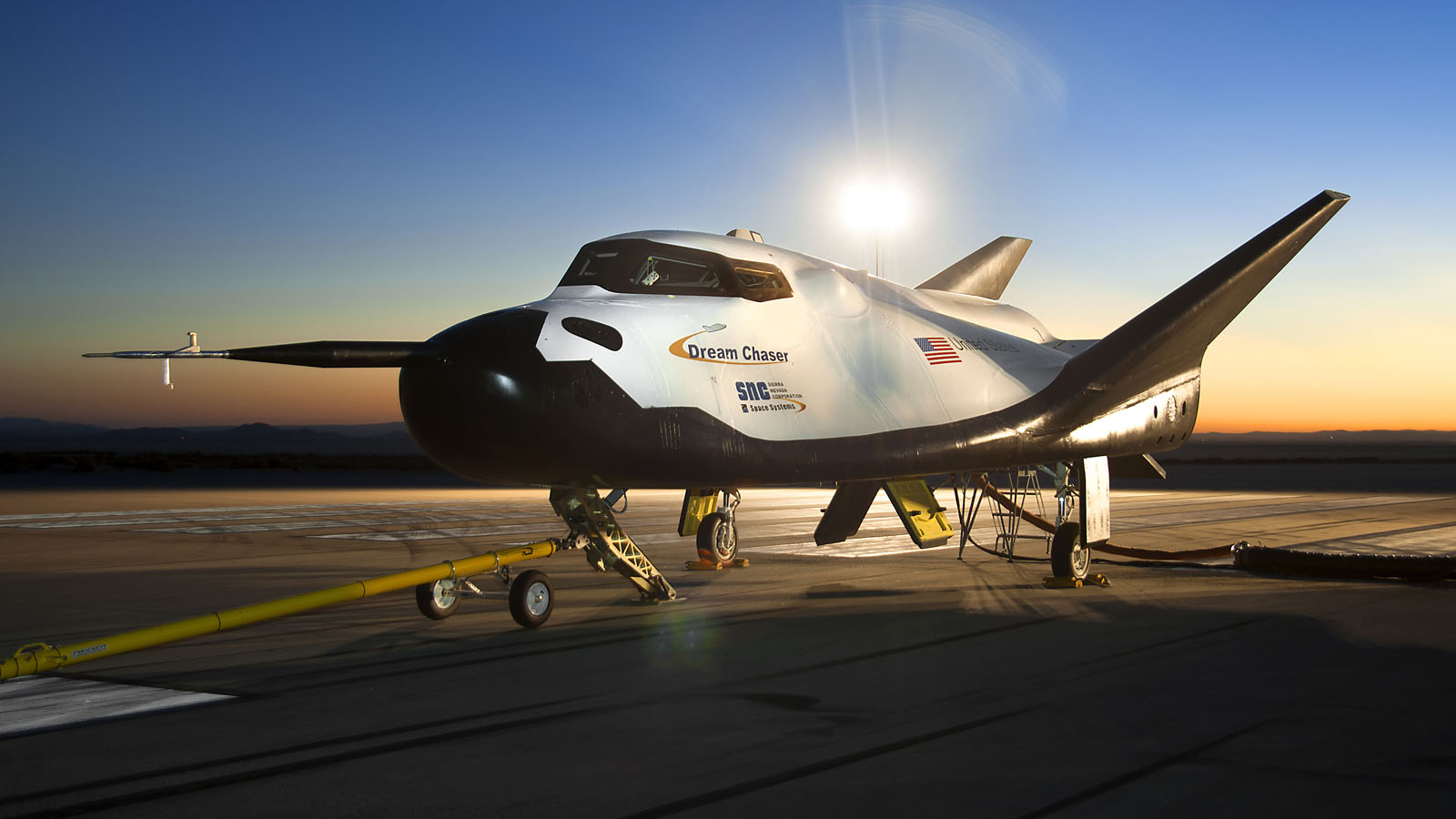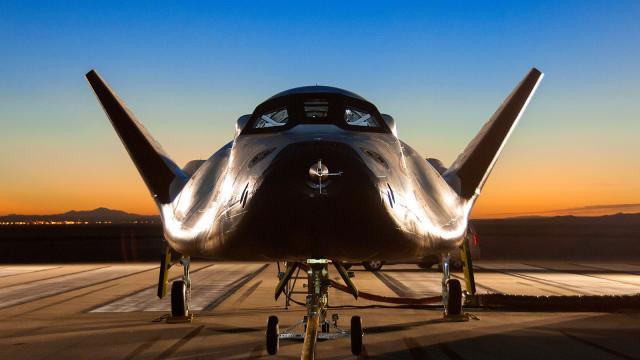So the post-Space Shuttle era isn’t going quite as splendidly as we’d initially hoped it would back when we retired the fleet back in 2011. Sure we can still deliver supplies to the ISS thanks to privately developed modules like the Dragon Capsule, but getting crews up there is still only possible with the the Russian Space Agency’s increasingly exorbitant launch assistance.
To fill that people-moving gap, NASA has again turned to private industry. Among the front runners is the seven-passenger Dream Chaser.
Developed by Sierra Nevade Corp Space Systems, the Dream Chaser is a manned, vertical-takeoff, horizontal-landing (VTHL) lifting-body spaceplane. Modelled after NASA’s earlier M2-F2 prototype from the 1960s (and what Lee Majors was driving just before he became the Six Million Dollar Man), as well as the HL-20, the Dream Chaser looks and flies much like a miniaturised space shuttle.
It’s designed to launch vertically atop an Atlas 5 rocket but can operate in both the sub-orbital atmosphere and Low Earth Orbit, relying on its entire fuselage — not just its wings — to generate lift and cruise in for horizontal landings at conventional air strips. The forces experienced on reentry are a fraction of what Space Shuttle-era astronauts endured, typically only about 1.5g.

Built primarily from composite materials, the Dream Chaser measures 10m long with a 7m wide wingspan and weighs just over 11,340kg. It’s powered by a pair of hybrid rocket engines running on hydroxyl-terminated polybutadiene (HTPB) and nitrous oxide. These non-toxic fuels were chosen, like virtually every element of the Dream Chaser’s design, with safety in mind. What’s more, the reaction control system thrusters run on ethanol and can be turned on and off at will, unlike a solid rocket booster that simply burns until its fuel supply is exhausted. The entire system can even operate autonomously if need be.
The spaceplane is currently in competition with module platforms from both SpaceX and Boeing for the lucrative NASA Commercial Crew Program contract. As of the end of last year, the Dream Chaser has undergone more than a decade of development, including over 300 simulated engine test firings. Its first test flight on October 26 went swimmingly, save for a heavy impact upon landing on account of a stuck left landing gear. Undaunted, SNC plans to perform an orbital flight demo in 2016 with crewed orbital missions the following year. If the program can avoid further catastrophic losses everything from ISS resupply runs to space tourism to free-flying scientific missions could all be borne atop a fleet of Dream Chasers. [Wired – Wikipedia – RD Mag]
